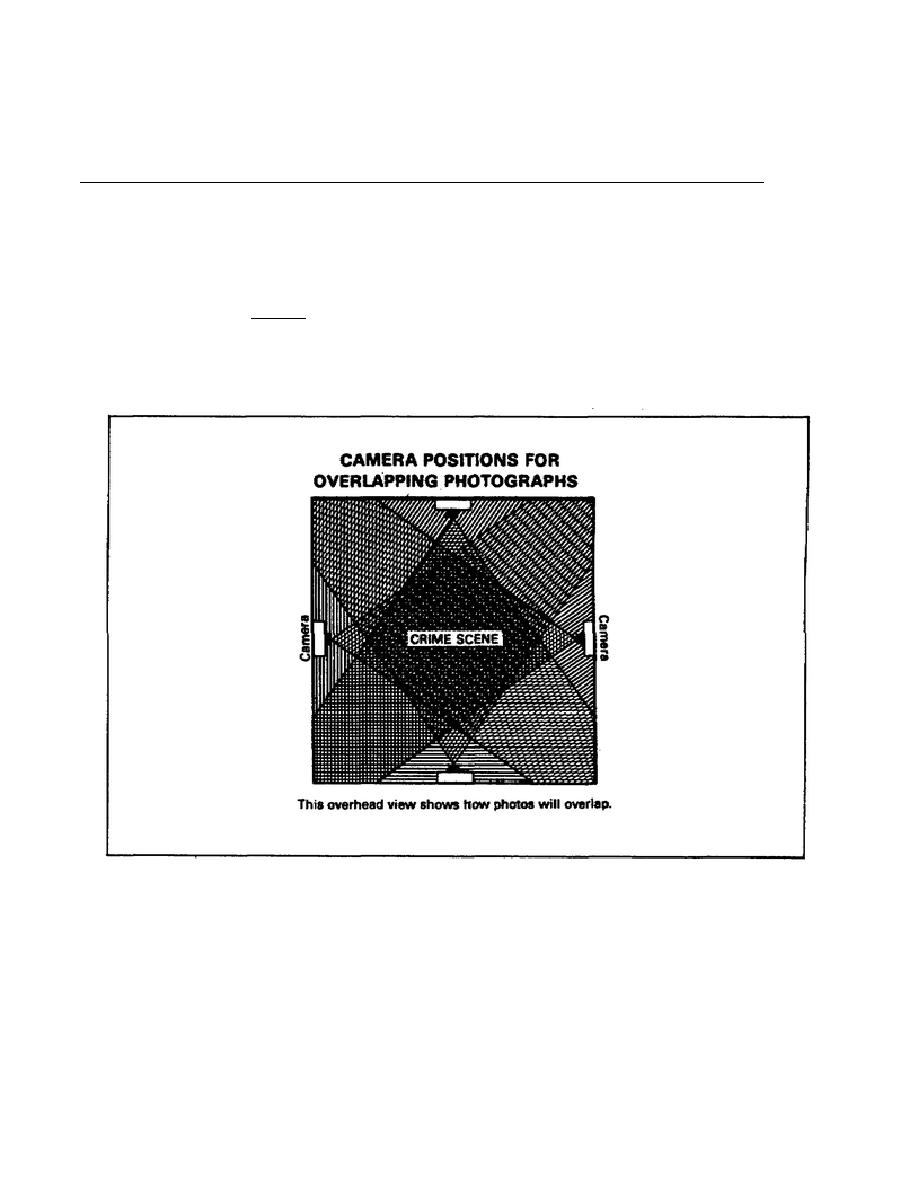
Photographs
Crime scene and evidence photographs are taken to supplement notes and sketches or
to clarify a point relative to a case.
Photographs are also used to identify
personnel and to form a permanent record of fragile or perishable evidence.
Objects must not be moved until they have been photographed from all angles.
Camera positions and distances to the focus point must be recorded.
This can be
done by measuring from a point on the ground directly below the camera lens to the
stationary object used as the focus point for the photograph. It is best to keep
the camera at eye level, unless a tripod is used.
NOTE: If an explosive was used at the crime scene and there is residue of the
explosive present, do not use a flash attachment.
Photographs of interior scenes, intended to depict the area as a whole (360
degrees), should be taken as overlapping segments in one direction around the room
or area. (See Figure 1-3.)
Figure 1-3.
Camera Positions for Overlapping Photographs.
Identification
of
Photographs.
The
technical
data
pertaining
to
each
photograph must be recorded so each can be precisely identified.
This
information, recorded in a photo log, becomes part of the permanent record of
1-9
MP2004



 Previous Page
Previous Page
